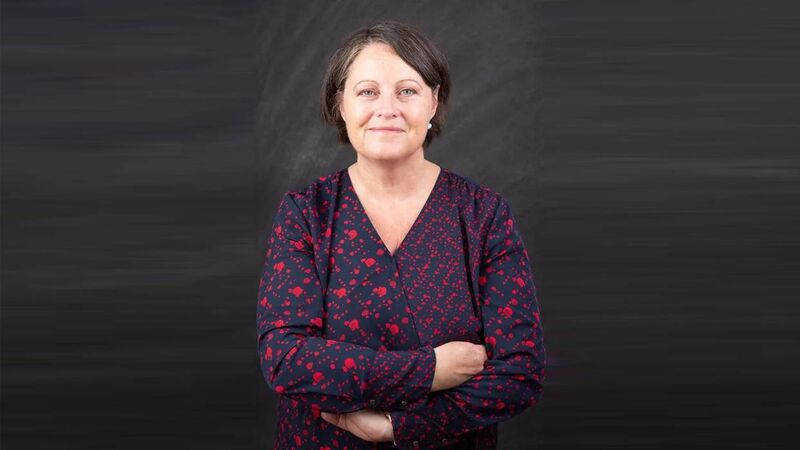Women's pensions in stasis

Dr Michelle Maher reflects on the slow progress for women's pensions in Ireland since the publication of her PhD thesis, The Politics of Pensions in Ireland, in 2016, reviewing the previous 50 years in Ireland.
Dr Michelle Maher is a woman who dedicates her time to issues that matter a lot. Today, she manages the excellent See Her Elected programme, which supports the women in rural Ireland who want to become county councillors or otherwise get involved in local politics.
Her earlier career was in the pensions industry, followed by an academic career, during which she undertook a review of a half-century of pension policy in Ireland for her PhD thesis, The Politics of Pensions in Ireland.
In her 2016 thesis, Dr Maher noted that it was more typical for women than men to combine periods of full-time, part-time and time out of the formal labour force to meet a range of paid and unpaid responsibilities.
She also noted that these factors, aggravated by the gender pay gap and occupational segregation, made it significantly harder for women to make adequate contributions in the pension system's public and private elements.
“From 2025, a phased change in the calculation of the State Pension (Contributory) was introduced, with yearly average calculation being replaced by a total contribution approach,” she says.
She says of the changes to be introduced in 2026: “Those aged between 23 and 60 and earning over €20,000 per annum, over all their employments, will be automatically enrolled into My Future Fund unless they are already in an occupational scheme.”
Outlining the implications, she says: “For those with some level of work outside the home over their working lifetime, their pension typically comes from two places – a State Pension (Contributory) and a pension associated with their work (called an occupational or a private pension). State Pensions are calculated on PRSI contributions paid with various methods of obtaining credited contributions.
“The State Pension (Contributory) produced from both the old yearly averaging system and the new total contribution approach are essentially linked to how long you have worked outside the home and paid PRSI. Your State Pension will be greater the more periods of work outside the home you have. That up to 20 years of contributions used in the State Pension calculation can be credited is positive and acknowledges the valuable work conducted outside of formal paid employment, predominantly by women in caring roles.”
Commenting on the fact that to get the maximum rate of state pension (contributory) you need the equivalent of 40 years between paid PRSI and credits, she says: “I strongly question why workforce participation should underpin both pillars of the Irish pension system because, as I outlined in my PhD, men and women still have very different types of engagement with the labour market in terms of their typical working patterns.”
In her PhD thesis, she referred to the two main gender sensitive reforms: an adequate state universal pension, and a state supplementary earnings-related pension with measures that recognise periods of home care work for pension purposes.
Fast forward nine years, and Dr Maher notes that a universal state pension was dismissed at a very early stage of the pension policy deliberations that have given us this system.
“What we are getting,” she says, “is a system with a state pension calculated on a total contributions approach and an increased role of private pension savings through automatic enrolment into the My Future Fund.
“In other words, our new pension system is solely predicated on having a solid labour market attachment. This, in my opinion, doesn’t meet the objective of a pension system, which is to keep older people from being at risk of living in poverty.
“Groups most likely to experience barriers to social and economic inclusion are lone parents, the disabled, those affected by homelessness and the housing crisis, and ethnic minorities. Gender is a risk factor as women are more likely than men to be lone parents. These are the groups who will find qualification for a full rate of State Pension (Contributory) and a solid pattern of savings into a work-related pension the most difficult.”
In her 2016 thesis, Dr Maher opined that the rate of payment needs to be set at an economically adequate level to guarantee a decent quality of life, noting that this was the way in which a universal pension facilitates defamilisation by providing men and women with the capacity to live autonomously.
At that time, she referenced 2007 research, which found that every aspect of the current pension system militates against women having an income that provides a decent standard of living in old age. Also, because women almost exclusively carry the social responsibility for unpaid care work in families, it is significantly harder for women to build up adequate contributions in both private and public systems.
Comparing that scenario with what’s there today, she says: ”Gender inequality in employment (which might include different patterns of full and part time employment, and with women far more likely to be out of the work force for extended periods due to caring work, the gender pension gaps and women segregated into lower paid professions), transforms into gender differences in pension outcomes in a pension system with both parts (State and Private) linked to work.”
In her 2016 thesis, Dr Maher alluded to plans to introduce an automatic enrolment system and noted that the system “will improve coverage for women who qualify for inclusion, but the positive effect of coverage is tempered by hours worked and salary scales. She then cited 2014 CSO figures that showed married men work longer in paid employment than married women, with 44.1% of married men working 40 hours or more per week compared with 16.8% of married women and 15.2% of widowed or divorced women.
Reflecting on that situation today, she says: “The introduction of automatic enrolment into My Future Fund should address the low rates of private pension coverage. However, women who opt-in will be far more likely to have their full-time employment interrupted for maternity leave, child care, other caring work and these episodes of non-employment may be multiple and for extended periods. A universal state pension completely unrelated to work would even the pension playing field.”
Damningly, she says: “The idea of a pension system being designed in a way that took into account differences in the way men and women work – and therefore produced different outcomes for men and women – was never at the top of the agenda.”
s for what we have today, she says it’s: “A system that rewards you in retirement for being a full-time, well-paid employee. You will have the perfect 40-year PRSI record you need to get the top rate of the State Pension (Contributory). You will have an uninterrupted career, maximising your chances of promotion into increasingly higher-paid employment.
"As pension contributions are calculated as a % of your earnings, you are building up a larger pension pot than someone with an interrupted career period of part-time employment and all that goes with that in terms of salary and promotion. Men have better odds than women of achieving the 40-year uninterrupted ideal. There is no other way of looking at that than gender inequality.”
Nothing that there is plenty of evidence on the gender pay gap and the amount of unpaid care work in families undertaken by women that interrupts their careers she concludes: Had the decision been taken to have a universal state pension based on residency, not work, it would have been a strong acknowledgement of the fact that there is inequality in labour market engagement and a move to stop the pension system reproducing that into our retirement years.”









